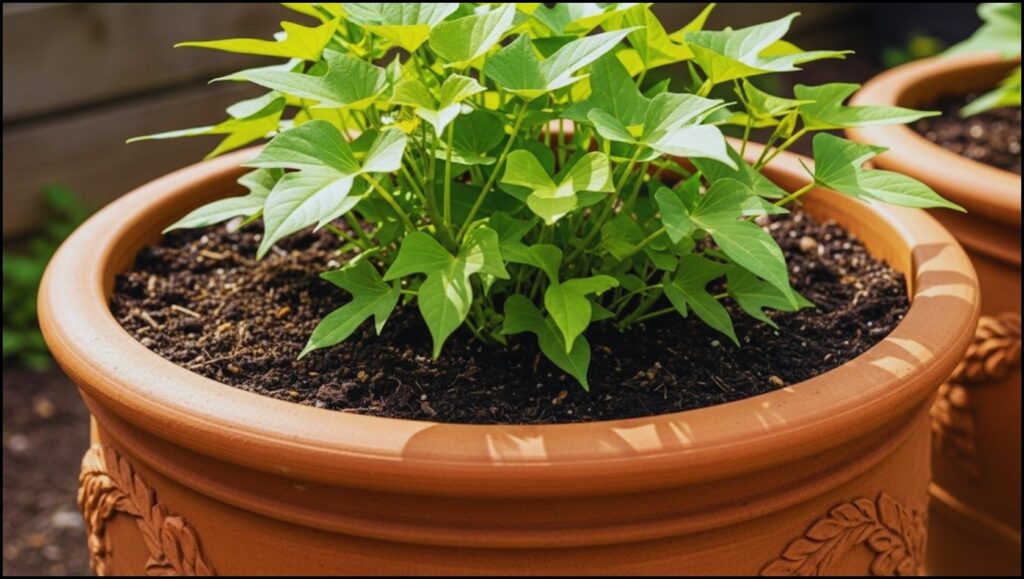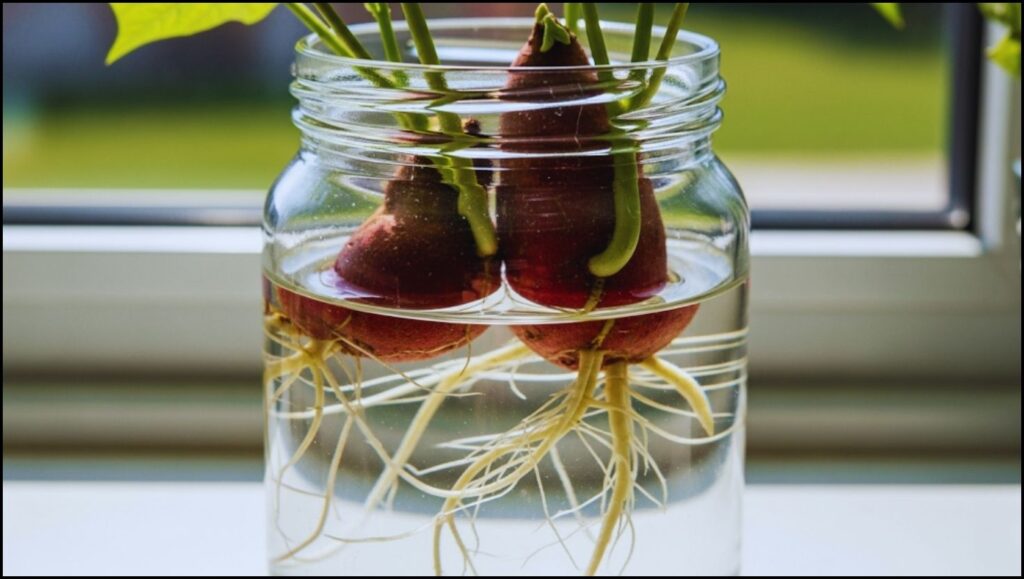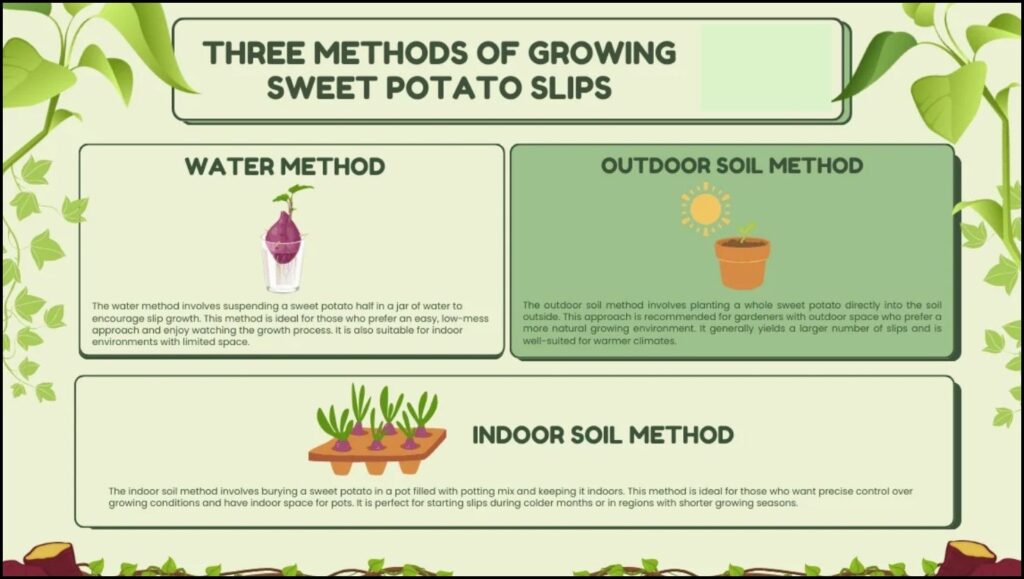
Growing sweet potatoes in pots offers an accessible method for cultivating this versatile tuber, particularly for gardeners with limited space or those in cooler climates. This approach allows for greater control over growing conditions, potentially leading to a more consistent harvest.
The Appeal of Container Gardening for Sweet Potatoes
Cultivating sweet potatoes in containers provides several advantages over traditional in-ground planting. It mitigates issues like poor soil quality, pest infestations, and limited garden space. Container growing also offers flexibility, allowing gardeners to move plants to optimize sun exposure or protect them from adverse weather. The controlled environment of a pot can lead to healthier root development and a more predictable yield, making it an attractive option for urban gardeners or those looking to extend their growing season.
Selecting the Right Container and Growing Medium
The success of growing sweet potatoes in pots hinges significantly on the choice of container and the quality of the growing medium. Sweet potatoes require ample space for their tubers to develop, making larger pots essential.
According to horticultural experts, a container with a minimum capacity of 15 gallons (approximately 57 liters) is recommended for each sweet potato plant. This can include large grow bags, half whiskey barrels, or substantial plastic pots. Proper drainage is critical to prevent waterlogging, which can lead to root rot. Containers should have multiple drainage holes at the bottom.
The ideal growing medium for sweet potatoes in pots is a well-draining, loose, and fertile potting mix. A blend of compost, perlite or vermiculite, and a good quality potting soil provides the necessary aeration, moisture retention, and nutrients. Avoid heavy garden soil, which can compact and hinder tuber development. “A loose, airy soil mix is paramount for sweet potato formation,” states Dr. Lena Hansen, a professor of horticulture at the University of California, Davis. “It allows the tubers to expand without encountering resistance.”
Starting Your Sweet Potato Slips
Sweet potatoes are typically grown from “slips,” which are sprouts that emerge from a mature sweet potato. These can be purchased from nurseries or propagated at home. To propagate slips, suspend a sweet potato in a jar of water, with about half of the potato submerged. Place it in a warm, sunny location. After a few weeks, sprouts will emerge from the top and roots from the bottom. Once the slips are about six to eight inches long with established roots, they can be carefully detached and planted.

Plant slips directly into the prepared containers, burying them deeply enough so that only the top leaves are exposed. Space multiple slips at least 12 inches apart in very large containers to allow for adequate growth.
Essential Care for Container-Grown Sweet Potatoes
Consistent care is vital for a successful sweet potato harvest in pots. This includes attentive watering, appropriate fertilization, and pest management.
Watering and Fertilization Regimen
Sweet potatoes require consistent moisture, particularly during the initial growth phase and tuber development. However, they are susceptible to root rot in waterlogged conditions. Therefore, the key is to water deeply when the top inch of soil feels dry to the touch, ensuring excess water drains freely from the bottom of the pot. Reduced watering is advisable as the harvest approaches to prevent splitting of the tubers.
For fertilization, a balanced, slow-release granular fertilizer can be incorporated into the potting mix at planting time. Alternatively, a liquid fertilizer with a lower nitrogen content and higher potassium and phosphorus can be applied every two to three weeks once the plants are established. Dr. Alex Chen, an agricultural scientist specializing in root crops, emphasizes the need for balanced nutrients. “Excessive nitrogen will promote leafy growth at the expense of tuber development,” he stated in a recent webinar on sustainable gardening practices. “Potassium, in particular, is crucial for strong root and tuber formation.”

Sunlight and Temperature Requirements
Sweet potatoes thrive in warm conditions and require abundant sunlight. They need at least six to eight hours of direct sunlight daily to produce a good harvest. In regions with cooler climates, container cultivation allows gardeners to place pots in the warmest, sunniest spots available, such as south-facing patios or sunrooms. They are sensitive to frost, so ensure they are protected if temperatures drop. Bringing pots indoors or covering them during unexpected cold snaps can extend the growing season.
Pest and Disease Management
While container growing can reduce some pest pressures, sweet potatoes can still be susceptible to common garden pests like aphids, spider mites, and whiteflies. Regular inspection of the foliage can help detect infestations early. Organic pest control methods, such as insecticidal soap or neem oil, are often effective. Ensuring good air circulation around the plants also helps prevent fungal diseases.
Harvesting Your Container-Grown Sweet Potatoes
Sweet potatoes typically mature in 90 to 120 days, depending on the variety and growing conditions. The first sign of readiness is often the yellowing of the leaves.
To harvest, carefully tip the entire pot onto a tarp or piece of cardboard and gently sift through the soil to locate the tubers. Avoid pulling the vines, as this can damage the delicate skin of the sweet potatoes. “Patience and gentle handling are crucial during harvest,” advises Maria Rodriguez, a master gardener and author of “Urban Edibles: Growing Food in Small Spaces.” “Damaged sweet potatoes do not store well.”
After harvesting, cure the sweet potatoes by placing them in a warm (80-85°F or 27-29°C), humid environment for about 10 days. Curing allows the skin to toughen and converts starches to sugars, enhancing their flavor and extending their storage life. After curing, store them in a cool, dark, well-ventilated area at around 55-60°F (13-16°C).
Cultivating sweet potatoes in containers offers a rewarding experience for home gardeners, providing fresh, homegrown produce with relatively straightforward practices. The controlled environment of a pot empowers gardeners to overcome common challenges, making this nutritious vegetable accessible to a wider audience. As urban gardening continues to gain popularity, the simplicity and efficiency of growing sweet potatoes in pots present a viable option for sustainable food production.
The Snake Plant Bloom Is Real—Here’s How to Finally See It for Yourself
